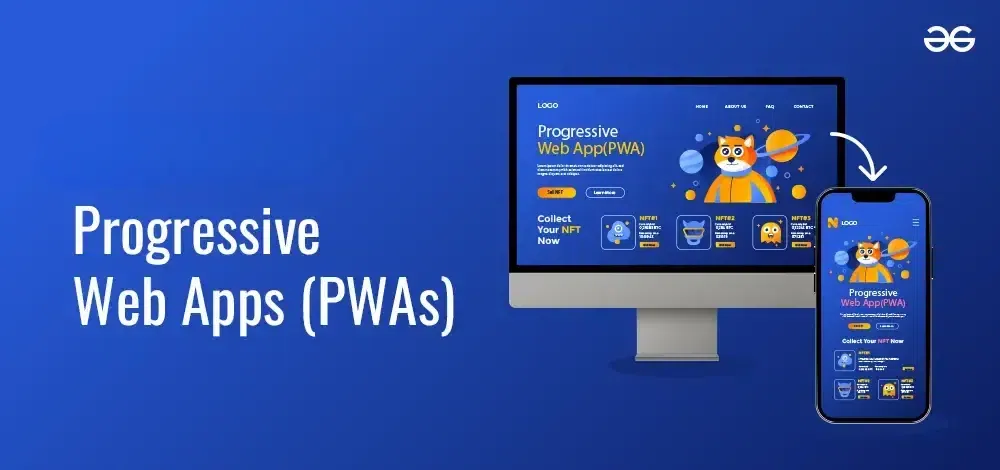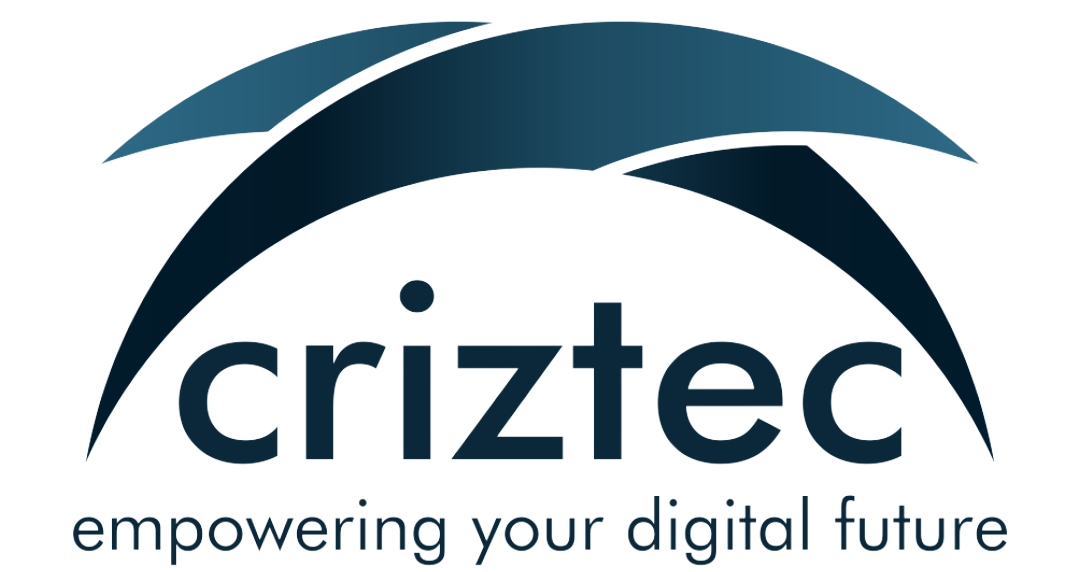· development · 9 min read
Why Progressive Web Apps (PWAs) Are the Future of Mobile Engagement in 2025
Discover how Progressive Web Apps are revolutionizing mobile engagement by combining the best of web and native apps. Learn about key features, real-world success stories, and actionable strategies for implementation.

The mobile landscape is evolving at breakneck speed, and businesses are constantly seeking innovative ways to engage users effectively. Enter Progressive Web Apps (PWAs) – a game-changing technology that’s reshaping how we think about mobile experiences in 2025. As traditional native apps face increasing challenges around discovery, installation friction, and maintenance costs, PWAs emerge as the perfect hybrid solution that combines the best of both web and native app worlds.
What Are Progressive Web Apps?
Progressive Web Apps represent a paradigm shift in web development, utilizing modern web capabilities to deliver app-like experiences directly through web browsers. At their core, PWAs are web applications that use cutting-edge web technologies to provide users with experiences that feel and function like native mobile applications.
The term “progressive” refers to these apps’ ability to work for every user, regardless of their browser or device capabilities. They progressively enhance the user experience based on the available features, ensuring that all users can access core functionality while those with modern browsers enjoy enhanced capabilities.
Key Technologies Behind PWAs
PWAs leverage several crucial technologies that make them possible:
- Service Workers: Background scripts that enable offline functionality, push notifications, and background sync
- Web App Manifest: JSON files that define how the app appears and behaves when installed
- HTTPS: Secure connections that are mandatory for PWA features
- Responsive Design: Adaptive layouts that work across all device sizes
- App Shell Architecture: Cached core application structure for instant loading
The Perfect Fusion: Web Meets Native
Advantages of Traditional Websites
Traditional websites offer several compelling benefits:
- Universal Access: No installation required – accessible via any web browser
- Instant Updates: Changes deploy immediately without app store approval
- SEO-Friendly: Search engines can index and rank web content effectively
- Lower Development Costs: Single codebase works across all platforms
- Easy Sharing: URLs make content sharing seamless
Advantages of Native Apps
Native applications provide distinct advantages:
- Superior Performance: Direct access to device hardware and optimized user interfaces
- Offline Functionality: Ability to work without internet connectivity
- Push Notifications: Real-time engagement through system-level notifications
- Device Integration: Access to cameras, GPS, sensors, and other device features
- App Store Presence: Discoverability through official app marketplaces
PWAs: The Best of Both Worlds
Progressive Web Apps ingeniously combine these advantages while minimizing the drawbacks of each approach. They deliver native-like performance and functionality while maintaining the accessibility and flexibility of web applications.
Key Features That Drive Mobile Engagement
1. Offline Access and Reliability
One of PWAs’ most compelling features is their ability to function offline or with poor network connectivity. Service workers cache essential resources and data, allowing users to continue using the app even when their internet connection is unreliable.
Real-World Impact: Twitter Lite, a PWA implementation, reduced data usage by 70% while providing full offline functionality for previously loaded content. Users can read tweets, compose new ones, and interact with cached content even without an internet connection.
2. Lightning-Fast Load Times
PWAs utilize sophisticated caching strategies and app shell architecture to achieve sub-second load times. The app shell – containing the core HTML, CSS, and JavaScript needed for the user interface – loads instantly from cache, while dynamic content loads progressively.
Performance Statistics:
- First load: 2-3 seconds (competitive with native apps)
- Subsequent loads: Under 1 second
- Time to interactive: 1-2 seconds
3. Native-Like Push Notifications
PWAs can send push notifications directly through the browser, even when the app isn’t actively open. This capability enables businesses to re-engage users with timely, relevant messages without requiring a native app installation.
Engagement Boost: Companies implementing PWA push notifications typically see:
- 15-20% increase in user engagement
- 25% higher click-through rates compared to email marketing
- 30% improvement in user retention rates
4. Frictionless Installation
Unlike traditional apps that require app store visits, downloads, and storage space, PWAs can be “installed” directly from the browser with a simple prompt. The installation process takes seconds and doesn’t require significant device storage.
Installation Benefits:
- No app store approval process required
- Instant installation from browser
- Minimal storage footprint (typically 1-5MB vs 20-100MB for native apps)
- Updates happen automatically in the background
5. Cross-Platform Compatibility
A single PWA codebase works seamlessly across all devices and operating systems. This universal compatibility dramatically reduces development and maintenance costs while ensuring consistent user experiences.
Why PWAs Are Ideal for Mobile Engagement in 2025
1. Overcoming App Fatigue
Modern consumers suffer from “app fatigue” – reluctance to download new applications due to storage constraints and overwhelming choice. PWAs eliminate this barrier by providing instant access without installation friction.
Market Reality:
- Average smartphone has 40+ installed apps
- Users typically use only 9 apps daily
- 25% of downloaded apps are used only once
2. Enhanced User Experience
PWAs deliver smooth, responsive experiences that rival native applications. Advanced web technologies like WebAssembly, WebGL, and improved JavaScript engines enable complex functionality with native-like performance.
3. Cost-Effective Development
Businesses can significantly reduce development costs by building a single PWA instead of separate native apps for iOS and Android. This unified approach also simplifies maintenance and feature updates.
Cost Comparison:
- Native app development: $100,000-$500,000+ for both platforms
- PWA development: $30,000-$150,000 for all platforms
- Maintenance costs: 60-70% lower for PWAs
4. Improved Discoverability
PWAs benefit from web-based SEO while also appearing in app stores. This dual presence increases discoverability and provides multiple pathways for user acquisition.
5. Future-Proof Technology
As web standards continue evolving, PWAs automatically benefit from new capabilities without requiring updates. This forward compatibility ensures long-term viability and continuous improvement.
Real-World Success Stories
1. Starbucks PWA
Starbucks created a PWA that delivers a full coffee-ordering experience while consuming only 233KB of storage space – 99.84% smaller than their native iOS app.
Results:
- 2x daily active users
- Order volume comparable to native app
- Significant improvement in user engagement
2. Pinterest PWA
Pinterest’s PWA implementation led to remarkable improvements in user engagement and business metrics.
Key Achievements:
- 60% increase in core engagements
- 44% increase in user-generated ad revenue
- 40% increase in time spent on site
- Page load speeds improved by 60%
3. Flipkart Lite
India’s largest e-commerce platform developed a PWA that resulted in:
- 70% increase in conversions
- 40% higher re-engagement rate
- 3x more time spent on site
- Significantly reduced bounce rates
4. Trivago PWA
The hotel booking platform’s PWA delivered:
- 150% increase in engagement for users who add to homescreen
- 97% increase in click-outs to hotel offers
- 32% increase in users returning to the site
Emerging Trends Shaping Mobile Interaction
1. AI-Powered Personalization
PWAs are increasingly incorporating artificial intelligence to deliver personalized experiences. Machine learning algorithms analyze user behavior to customize content, recommendations, and interface elements in real-time.
2. Voice Interface Integration
With the rise of voice assistants, PWAs are integrating voice commands and speech recognition capabilities, making them more accessible and convenient for users.
3. Augmented Reality (AR) Features
Advanced PWAs now support AR experiences through WebXR APIs, enabling immersive shopping experiences, virtual try-ons, and interactive product demonstrations.
4. Advanced Hardware Access
Modern PWAs can access device cameras, microphones, GPS, accelerometers, and other sensors, enabling sophisticated functionality previously limited to native apps.
5. Edge Computing Integration
PWAs are leveraging edge computing to process data closer to users, reducing latency and improving performance for real-time applications.
6. Progressive Enhancement Philosophy
The focus is shifting toward progressive enhancement, where PWAs provide baseline functionality for all users while offering advanced features for capable devices and browsers.
Actionable Strategies for PWA Implementation
1. Assess Your Current Mobile Strategy
Before implementing a PWA, conduct a comprehensive audit of your existing mobile presence:
Evaluation Framework:
- Analyze current mobile traffic and user behavior
- Identify pain points in your existing mobile experience
- Assess technical requirements and resources
- Define success metrics and KPIs
- Evaluate competitor PWA implementations
2. Start with Core Features
Begin your PWA journey by focusing on essential functionality:
Phase 1 Implementation:
- Responsive design optimization
- Basic service worker implementation
- Web app manifest creation
- HTTPS security implementation
- Core offline functionality
3. Optimize for Performance
Performance is crucial for PWA success:
Performance Best Practices:
- Implement lazy loading for images and content
- Minimize JavaScript bundle sizes
- Use efficient caching strategies
- Optimize critical rendering path
- Implement code splitting
4. Focus on User Experience
Design PWAs with user-centric principles:
UX Guidelines:
- Intuitive navigation and interface design
- Fast, responsive interactions
- Clear visual feedback for user actions
- Seamless offline-to-online transitions
- Consistent branding and visual identity
5. Implement Advanced Features Gradually
Roll out sophisticated PWA features in phases:
Advanced Feature Roadmap:
- Push notification integration
- Background sync capabilities
- Advanced caching strategies
- Device hardware integration
- AI-powered personalization
6. Monitor and Optimize Continuously
Establish robust analytics and monitoring:
Key Metrics to Track:
- Installation rates and user acquisition
- Engagement and retention metrics
- Performance and loading times
- Conversion rates and business impact
- User feedback and satisfaction scores
Overcoming Common Implementation Challenges
1. iOS Safari Limitations
While iOS Safari supports PWAs, some limitations exist:
Solutions:
- Implement graceful degradation for unsupported features
- Use feature detection to provide alternative experiences
- Stay updated with Safari’s evolving PWA support
- Consider hybrid approaches for iOS-specific requirements
2. Browser Compatibility
Ensure broad browser support:
Compatibility Strategy:
- Use progressive enhancement principles
- Implement polyfills for unsupported features
- Test across multiple browsers and devices
- Provide fallback experiences for older browsers
3. User Education
Help users understand PWA benefits:
Education Tactics:
- Clear messaging about PWA advantages
- Simple installation instructions
- Onboarding flows that highlight key features
- Performance comparisons with existing solutions
The Competitive Advantage of Early Adoption
Businesses that embrace PWAs early in 2025 gain significant competitive advantages:
1. First-Mover Benefits
Early PWA adopters can:
- Establish market leadership in mobile experience
- Build user loyalty through superior experiences
- Gain valuable insights from early user feedback
- Refine their approach before competitors catch up
2. Cost Efficiency
PWA implementation provides immediate cost benefits:
- Reduced development and maintenance expenses
- Lower infrastructure and hosting costs
- Decreased customer acquisition costs
- Improved ROI on mobile investments
3. Future Readiness
PWAs position businesses for future mobile trends:
- Compatibility with emerging web standards
- Scalability for growing user bases
- Flexibility to adapt to new technologies
- Reduced technical debt accumulation
Conclusion: The PWA Imperative
As we advance through 2025, Progressive Web Apps represent more than just a technological trend – they’re becoming a fundamental requirement for businesses serious about mobile engagement. The evidence is clear: PWAs deliver superior user experiences, reduce development costs, and provide measurable business value.
The companies that will thrive in the mobile-first future are those that recognize PWAs’ transformative potential and act decisively to implement them. The question isn’t whether your business should adopt PWAs, but how quickly you can begin your PWA journey.
Getting Started: Your Next Steps
- Audit your current mobile strategy and identify opportunities for PWA implementation
- Assemble a skilled development team with PWA expertise or partner with experienced PWA developers
- Define clear objectives and success metrics for your PWA initiative
- Start with a minimal viable PWA focusing on core functionality and user experience
- Implement analytics and monitoring to track performance and user engagement
- Plan for iterative improvement based on user feedback and emerging technologies
The future of mobile engagement is progressive, web-based, and happening now. Organizations that embrace PWAs today will set themselves apart as leaders in the competitive mobile landscape of 2025 and beyond.
Ready to transform your mobile strategy with a Progressive Web App? Contact Criztec Technologies today to discuss how we can help you build a PWA that drives engagement and delivers results.




